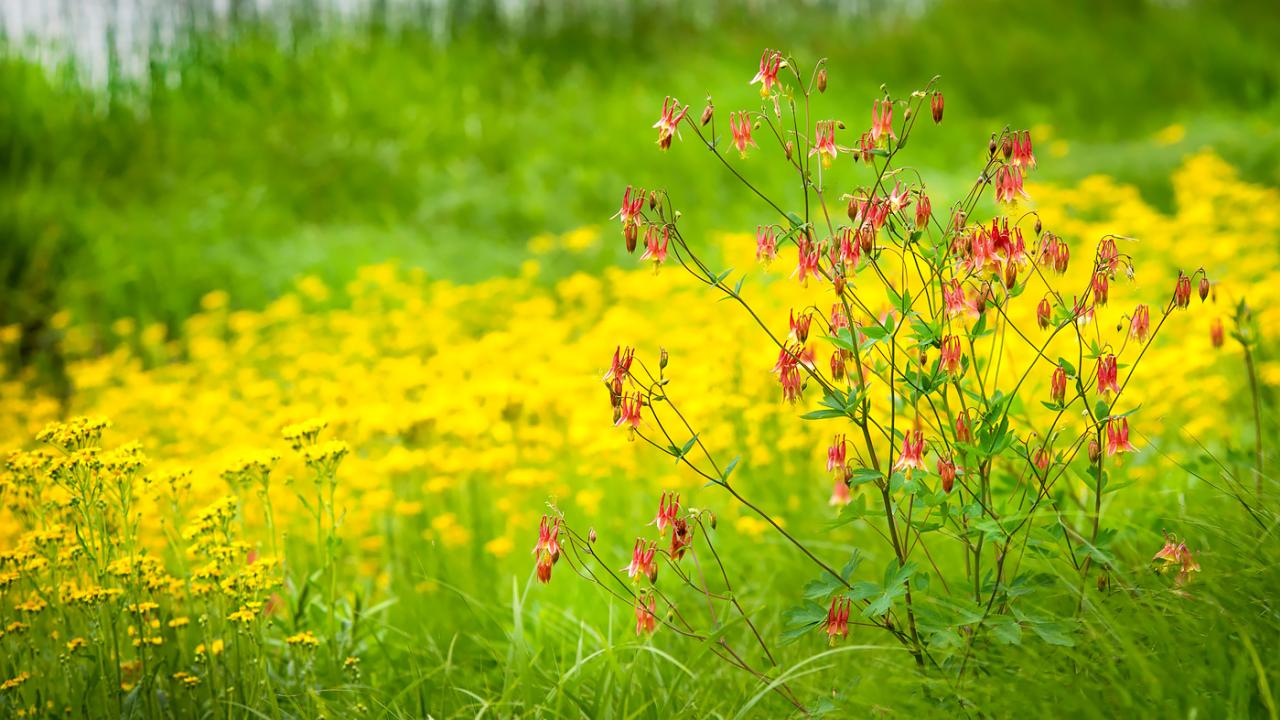

Plant Science &
Conservation
Garden Stories
The Evolving, Never-Ending Challenge of Invasive Species in Natural Areas
You may have noticed more garlic mustard in your garden, yard, or alley this year. The ecologists who tend to the Chicago Botanic Garden’s natural areas have, too. We had not seen much garlic mustard in our natural areas in recent years, and its reemergence is a reminder for all of us that controlling and managing invasive species is an ongoing challenge.
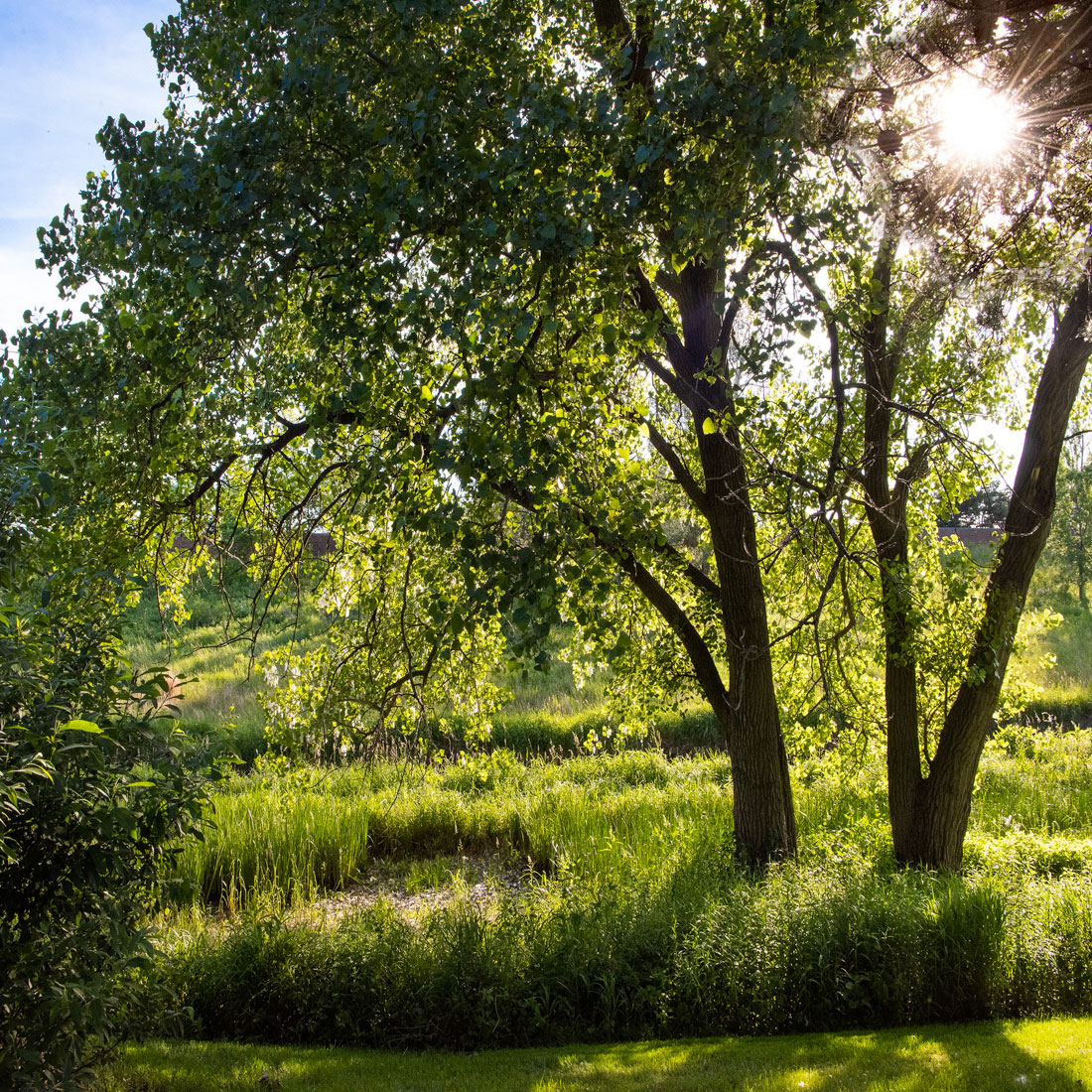
Our natural areas comprise more than half of the Chicago Botanic Garden’s 385 acres, and these woods, prairie, river, shorelines, and lakes are home to a remarkably diverse collection of plants. In most of our natural areas, we allow natural processes to operate, using management techniques to support the greatest diversity of native species possible. That management includes native species control; invasive species, like garlic mustard, can quickly spread and crowd out native species. We need those native plants to maintain healthy habitats for birds, wildlife, and other plants.
Prescribed burning is essential for control of invasive species. We were only able to do one prescribed burn at the Garden this year before the closure due to the COVID-19 health crisis. We hope for a better burn season this fall and next spring so we don’t lose more ground than necessary to invasive species. And we will have to be particularly diligent this year to manage invasive species with other tools to ensure they don’t set seed and become an even larger problem next year.
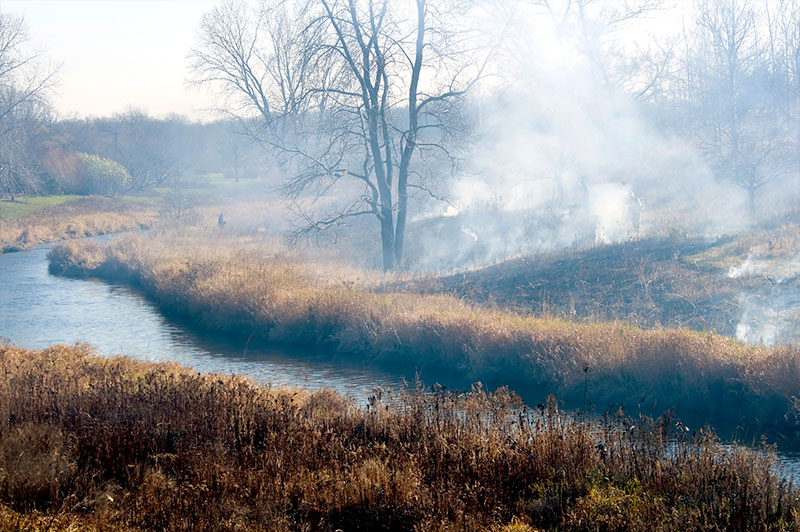
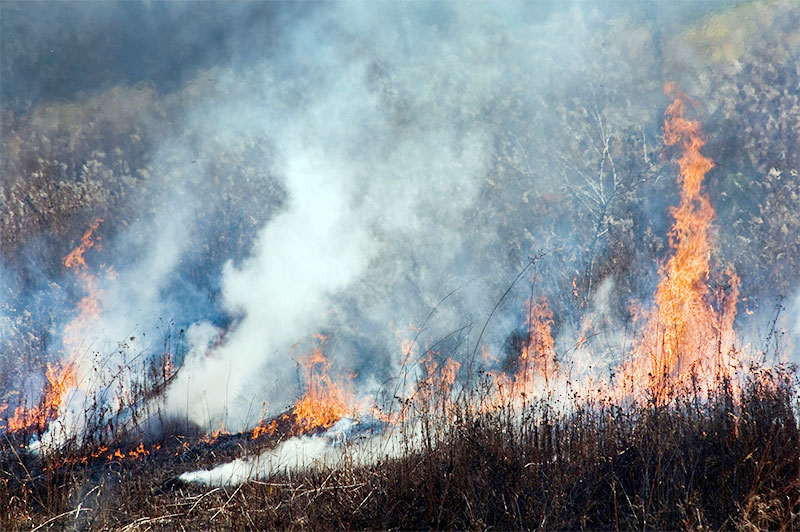
Unfortunately, one species in particular that we thought we had relatively under control—garlic mustard (Alliaria petiolata)—is having a banner year. Each plant can produce thousands of tiny seeds, and it is notorious for invading woodlands, altering soil chemistry and diversity, and crowding out native flora. It is not a desirable plant in any natural area (or garden bed, for that matter) in the region.
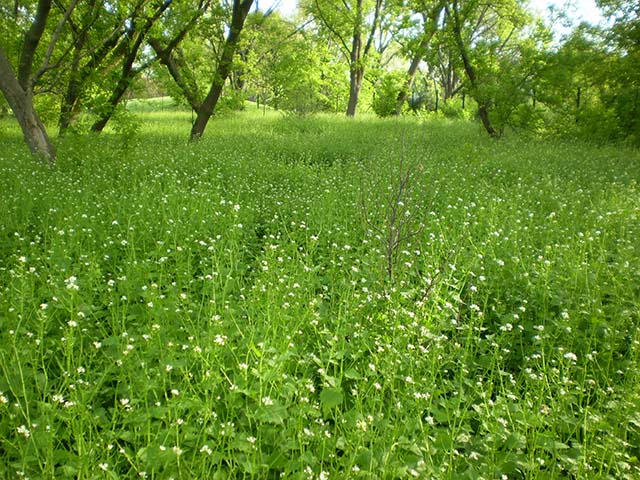
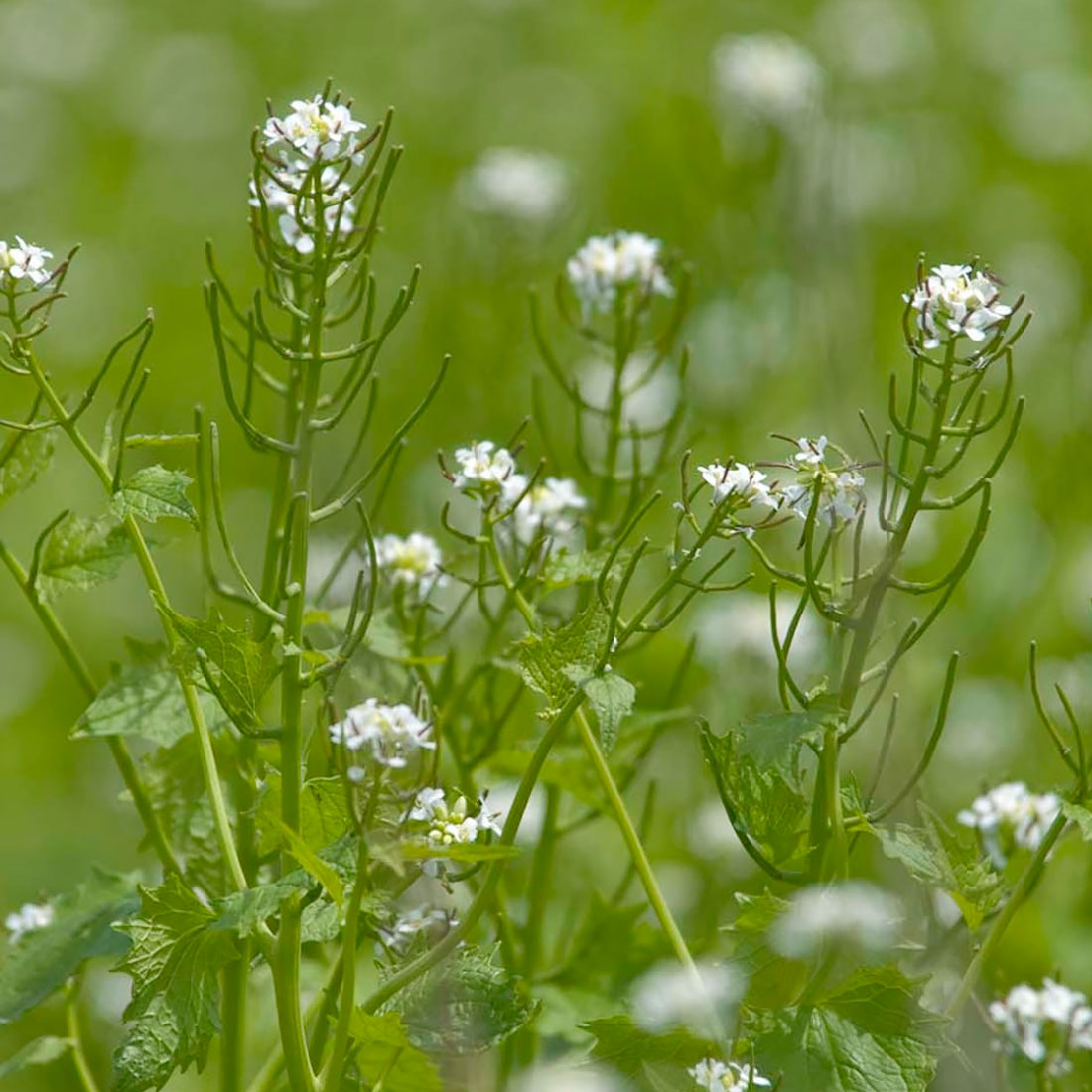
Garlic mustard (Alliaria petiolata)
During the Garden’s closure, Garden ecologists worked hard (while maintaining social distancing) to find and remove garlic mustard, buckthorn, and many other invaders from throughout our natural areas before they set seed. Missing even one plant will lead to an exponentially greater problem next year due to its copious seed production.
This is something you can do, too, in your yard or even in city alleys. It is easy to find garlic mustard when the plant is actively growing. The leaves are triangular with toothed edges and are much larger at the base of the plant. It has multiple stalks with developing or fully formed flowers at the tips. Flowers are white with four petals. The plant smells like garlic when crushed. When removing the plant, it’s important to remove the whole plant, including all of its fleshy root. Even a tiny remnant left in the soil will regenerate. Gently pull the plant out (if the soil is moist, this job is easier) by grasping it low on its stem. Do not shake; that will release the seeds. Put it in a plastic bag and tie securely; contact your village or city for specific instructions on disposal.
With an increased awareness of the environmental and economic threats posed by invasive species, the Garden has expanded and strengthened its invasive plant policy and the list of invasive plants. This plant list is a guide for homeowners on what to plant and what to remove. See our updated list.
It has taken more than 30 years of prescribed burning and ongoing management to bring our highest quality natural area, McDonald Woods, back from a dense thicket of buckthorn and garlic mustard to a diverse oasis that supports thousands of the plants and wildlife species that have called this region home for centuries.
The work of Garden ecologists, and natural areas managers across the region, is essential because natural areas are living museums that support research and learning about the Chicago region’s remarkable natural heritage. They are also a place of inspiration and a proven way to de-stress in an increasingly hectic world.

